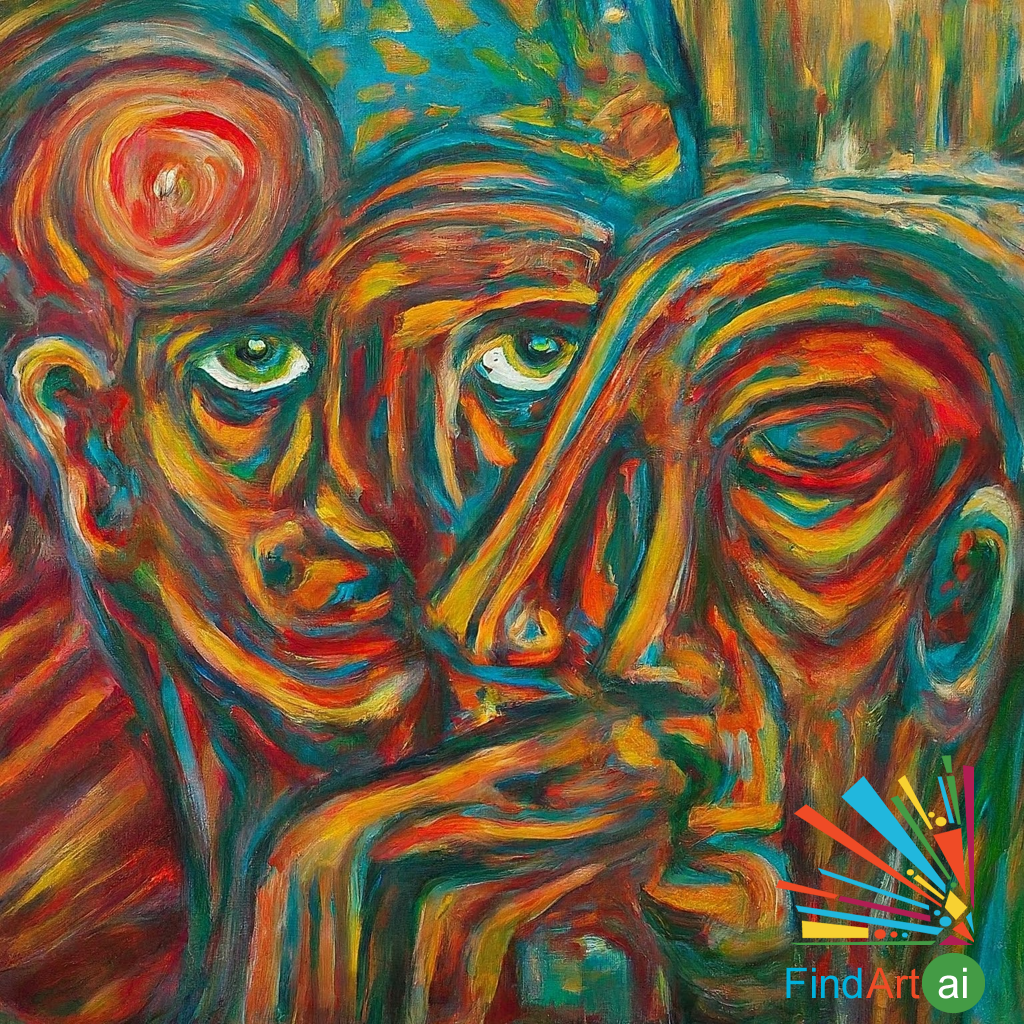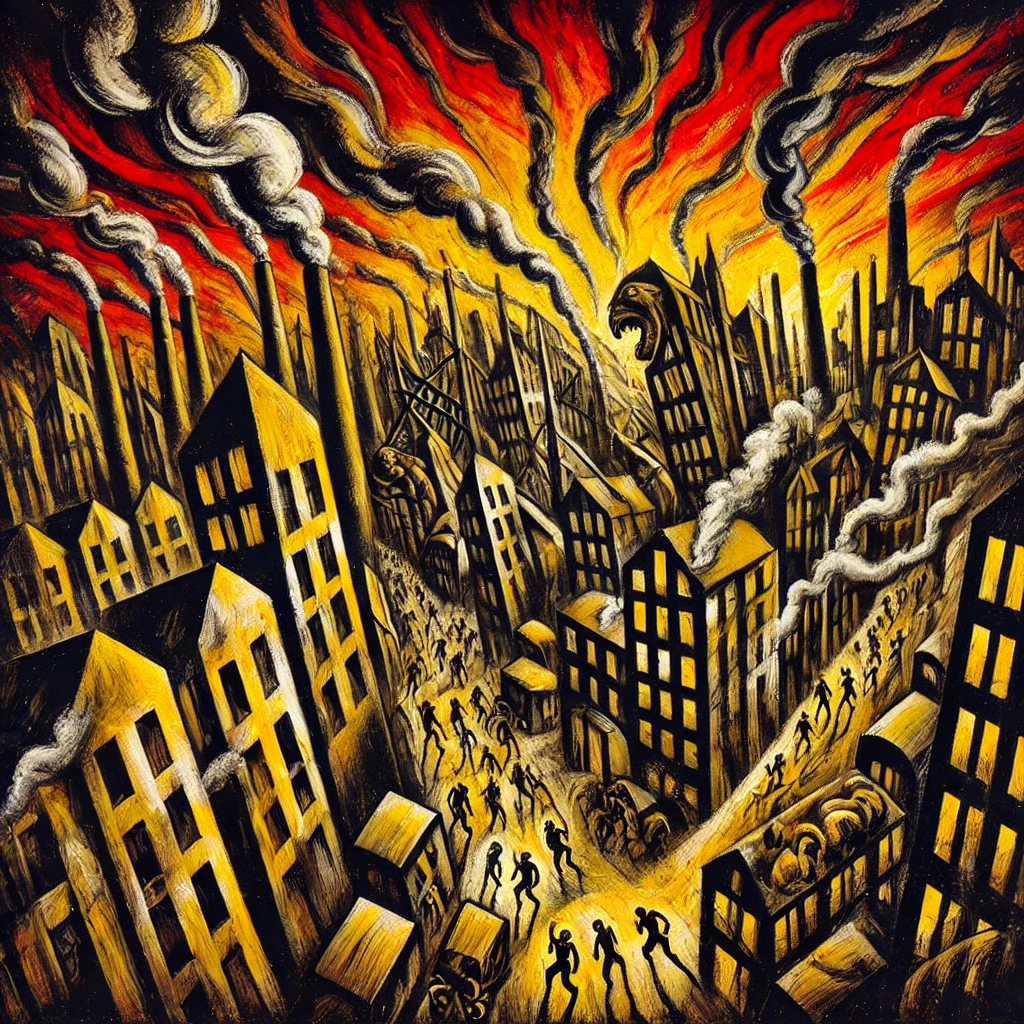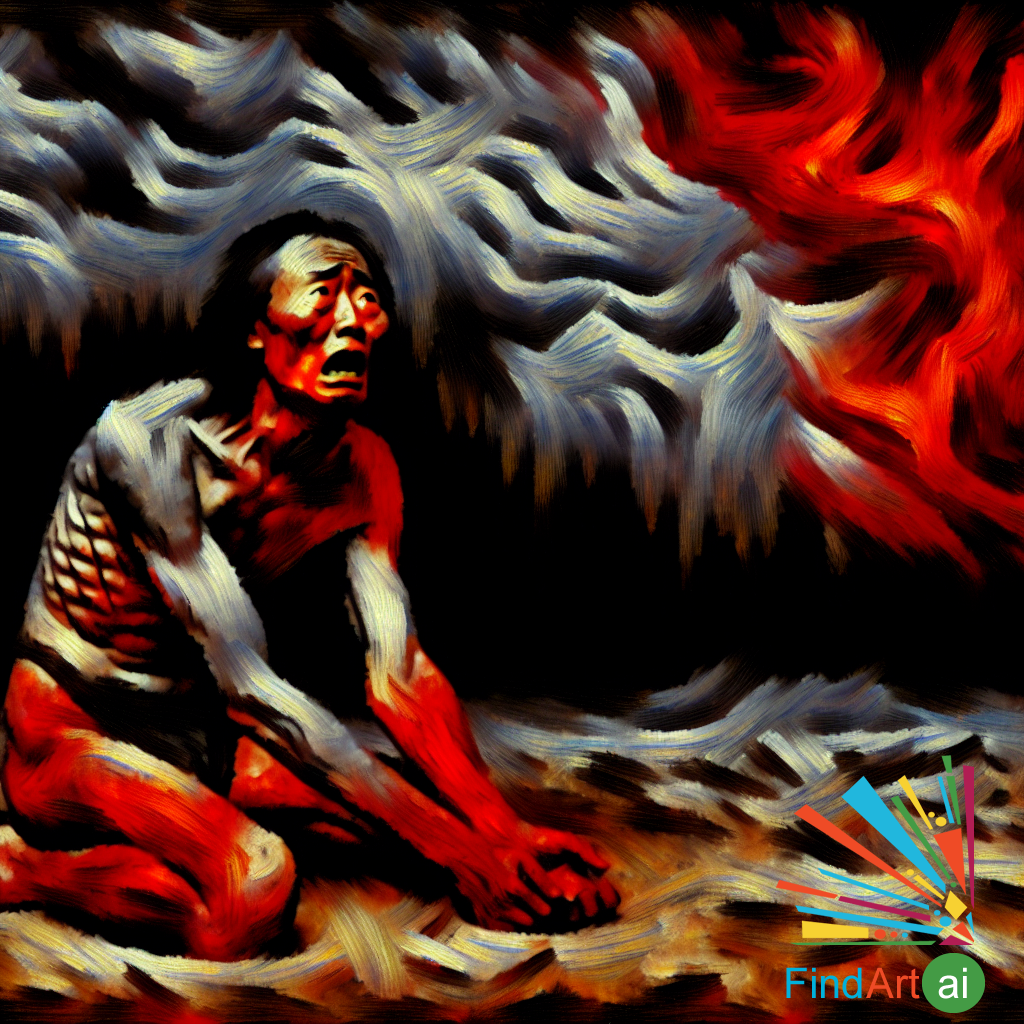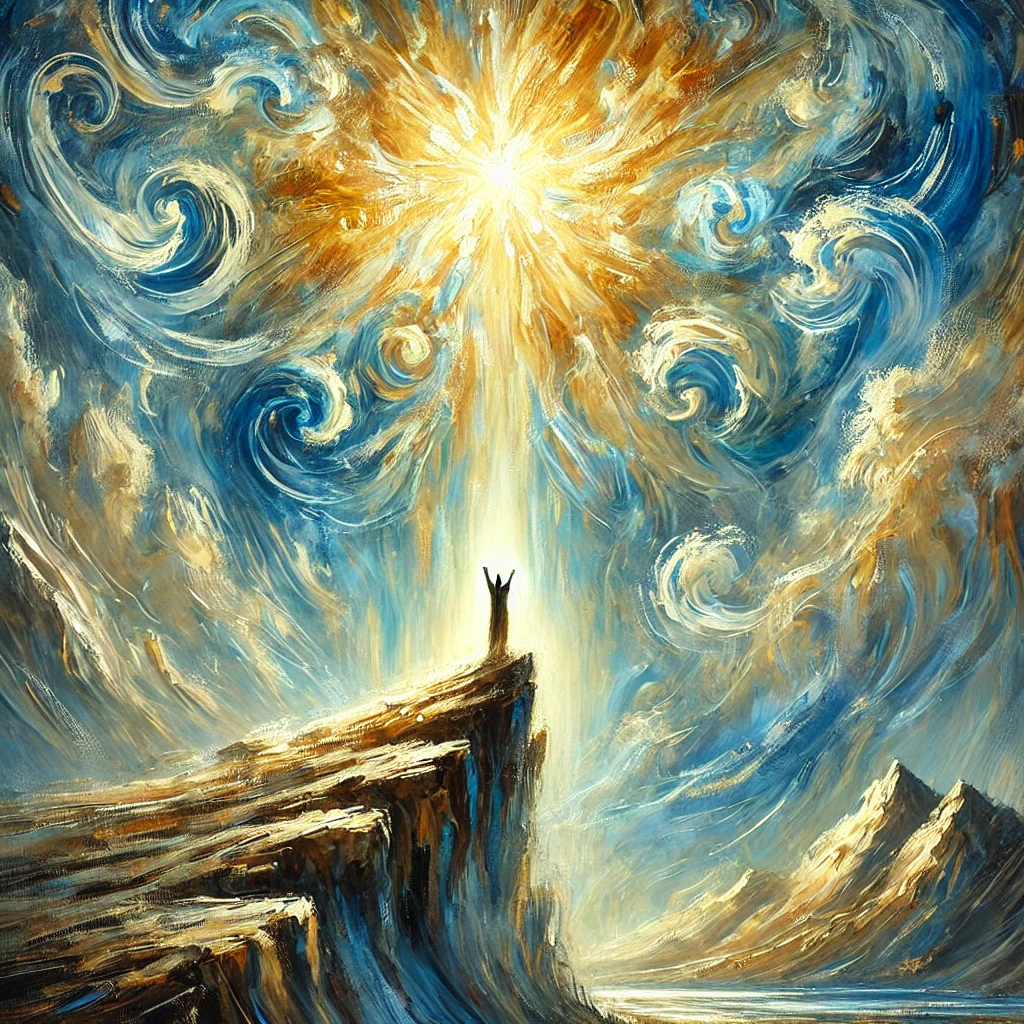Expressionism
Expressionism is a painting style that emerged in the early 20th century, characterized by its focus on conveying emotional experience rather than physical reality. Expressionist artists sought to depict the internal feelings of the subject or the artist, often through exaggerated forms, bold colors, and distorted perspectives. The aim was to evoke intense emotions such as anxiety, fear, or passion, using visual elements to express the emotional and psychological states of both individuals and society.
Key Characteristics of Expressionism
- Emphasis on Emotion Over Realism
- Expressionism prioritizes emotional expression over accurate representation. Artists distort or exaggerate forms to communicate the intensity of emotions, whether it be joy, fear, or alienation.
- Example: Edvard Munch’s The Scream is a quintessential Expressionist work, where the swirling, distorted forms and bold, unnatural colors convey the subject’s overwhelming anxiety and existential terror.
- Bold and Unnatural Color
- Expressionist painters often used bold, unnatural, and vibrant colors that do not correspond to reality, choosing hues that enhance the emotional tone of the painting. Color was used not for its realistic value but for its psychological impact.
- Example: Ernst Ludwig Kirchner’s Street, Berlin uses bright, clashing colors to heighten the tension and alienation of modern urban life.
- Distorted Forms and Figures
- In Expressionism, figures and objects are frequently distorted or exaggerated to convey inner turmoil or emotional states. Proportions may be skewed, and forms may appear jagged or elongated to intensify the emotional impact.
- Example: Egon Schiele’s Self-Portrait with Physalis, where the angular, twisted body reflects a raw, emotional intensity and psychological depth.
- Expressive Brushwork and Texture
- Expressionist paintings often feature visible, energetic brushstrokes and thick application of paint, creating a sense of movement and immediacy. The texture of the paint itself contributes to the emotional intensity of the work.
- Example: Vincent van Gogh’s Starry Night, with its swirling, expressive brushstrokes that give the painting a dynamic, emotional energy, even though van Gogh is more often associated with Post-Impressionism.
- Themes of Angst, Alienation, and the Human Condition
- Expressionist artists frequently explored themes of alienation, anxiety, and the darker sides of human existence. Their work often reflects the inner struggles of individuals in a rapidly changing, modern world.
- Example: Käthe Kollwitz’s The Weavers, which expresses the suffering and despair of working-class individuals during industrialization through harsh lines and dramatic contrasts.
- Rejection of Traditional Perspective
- Traditional rules of perspective and proportion are often abandoned in Expressionism. Depth is compressed, and spaces are flattened or distorted to focus more on emotional expression rather than creating an illusion of reality.
- Example: Erich Heckel’s Two Men at a Table, where the figures are unnaturally elongated, and the space feels cramped, emphasizing the emotional tension between the figures.
- Dark or Intense Subject Matter
- Many Expressionist paintings delve into intense or unsettling subject matter, reflecting themes such as existential dread, inner turmoil, war, and social conflict. The content often mirrors the fractured emotional and psychological states of the characters portrayed.
- Example: Max Beckmann’s The Night, which depicts a chaotic and violent scene, reflecting the horrors of war and personal trauma through distorted figures and nightmarish imagery.
Common Themes in Expressionism
- Inner Psychological States: Expressionist painters sought to depict what was happening internally rather than externally, focusing on emotions such as fear, angst, and alienation.
- The Modern World: Themes of alienation in modern society, urban life, and the isolation of the individual in an industrialized world were central to many Expressionist works.
- Human Suffering: The darker aspects of human existence, including war, poverty, and psychological struggle, are frequently explored, often as a response to the turbulent times of the early 20th century.
- Spirituality and the Sublime: Some Expressionists explored themes of spirituality, seeking to express transcendent or mystical experiences through abstracted forms and emotional colors.
Famous Expressionist Artists and Works
- Edvard Munch
- Though more often associated with Symbolism, Munch’s works, such as The Scream, had a profound influence on Expressionism. His use of bold color, distorted forms, and emotionally charged subject matter helped define the style.
- Ernst Ludwig Kirchner
- A leading member of the German Expressionist group Die Brücke (The Bridge), Kirchner’s works like Street, Dresden and Street, Berlin depict urban alienation and the disconnection of modern life through sharp, angular forms and vibrant colors.
- Egon Schiele
- Known for his raw, intense portraits and figures, Schiele’s works, such as Self-Portrait with Physalis, often depict distorted, angular forms that express psychological depth and emotional intensity.
- Wassily Kandinsky
- While later associated with Abstract art, Kandinsky’s early works like Composition VII reflect an Expressionist use of color and form to express spiritual and emotional themes. His abstract shapes were meant to convey inner emotional experiences.
- Franz Marc
- A member of the German Expressionist group Der Blaue Reiter, Marc’s works, such as The Tower of Blue Horses, focus on animals as symbols of spirituality and purity, using bold, abstracted colors and forms.
- Max Beckmann
- Beckmann’s post-World War I works, such as The Night, reflect the trauma and disillusionment of the time. His paintings often depict chaotic, nightmarish scenes that express the dark side of the human experience.
- Käthe Kollwitz
- Known for her haunting depictions of poverty, war, and grief, Kollwitz’s works, such as The Mothers, capture the raw emotion of human suffering through powerful lines and stark contrasts.
Expressionism Movements
- Die Brücke (The Bridge):
- A group of German Expressionist artists, including Kirchner and Heckel, who sought to create a bridge between traditional and modern art. They emphasized emotional expression, raw brushstrokes, and intense colors.
- Der Blaue Reiter (The Blue Rider):
- Led by Wassily Kandinsky and Franz Marc, this group emphasized spiritual expression through abstracted forms and vibrant colors. They moved toward more abstract, expressive compositions.
Expressionism is a painting style that focuses on conveying deep emotional and psychological experiences through bold colors, distorted forms, and expressive brushwork. Rather than depicting reality as it appears, Expressionist artists sought to express their inner emotions, often reflecting themes of angst, alienation, and the darker aspects of human existence. Through exaggerated forms and non-naturalistic use of color, Expressionist art challenges viewers to engage with the intense emotional landscapes of the human condition. The movement’s exploration of individual experience and inner turmoil has had a lasting impact on modern art.
Expressionism Paintings with Inner Psychological States Theme
Expressionist paintings with the Inner Psychological States theme focus on conveying intense emotion...
Expressionism Paintings with The Modern World Theme
Expressionist paintings with the Modern World theme provide a raw and emotional critique of contempo...
Expressionism Paintings with Human Suffering Theme
Expressionist paintings with the Human Suffering theme prioritize emotional depth over realism, usin...
Expressionism Paintings with Spirituality and the Sublime Theme
Expressionist paintings with the Spirituality and the Sublime theme transcend ordinary depictions of...




